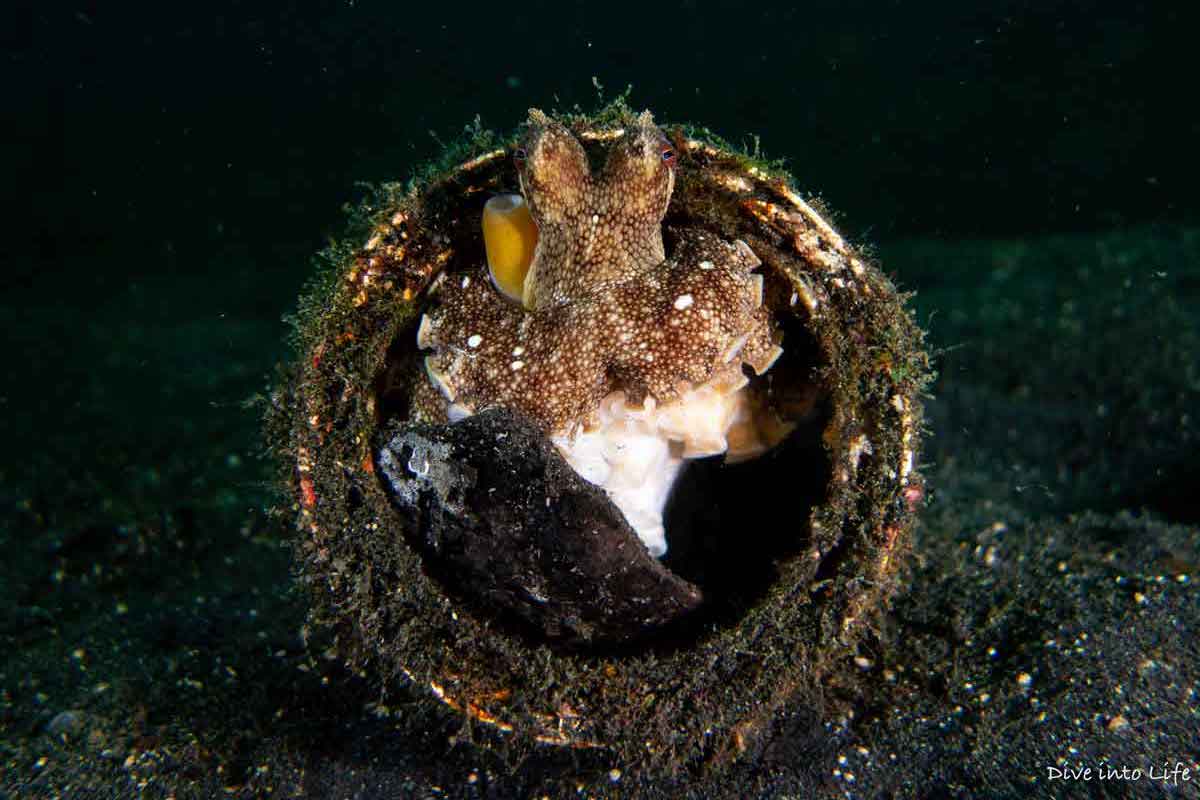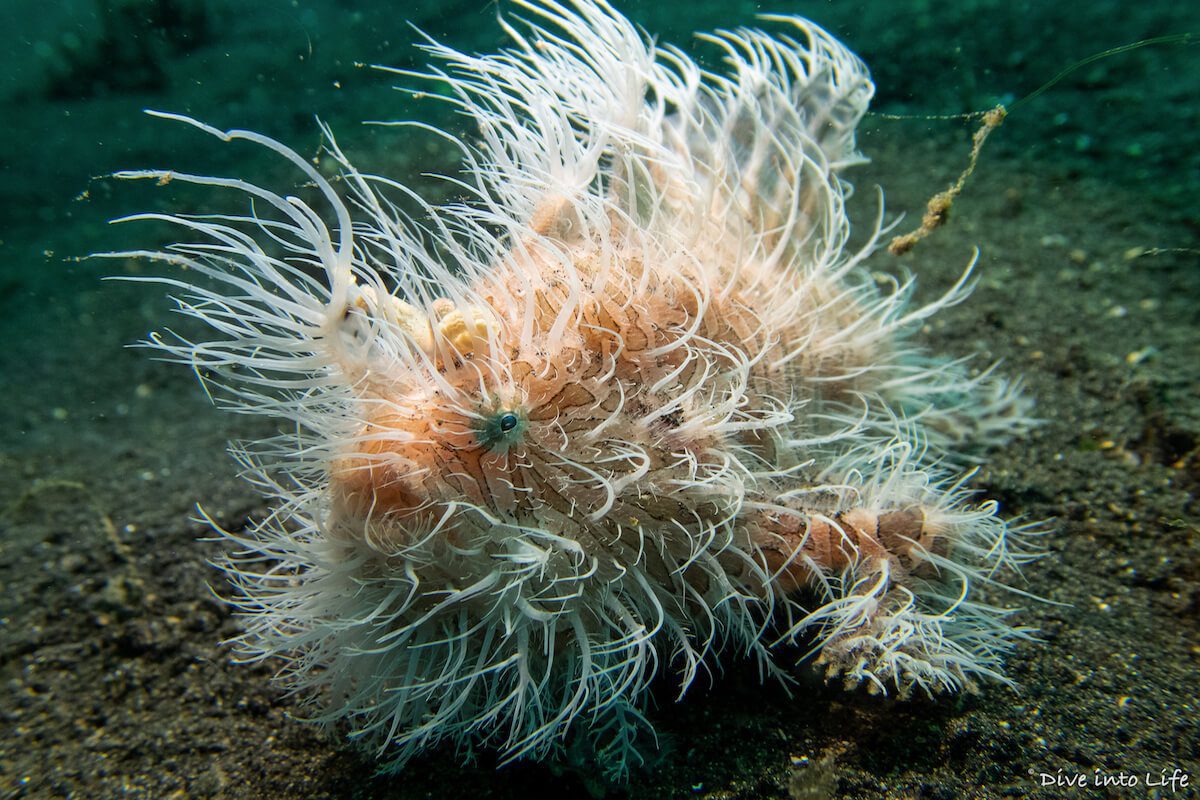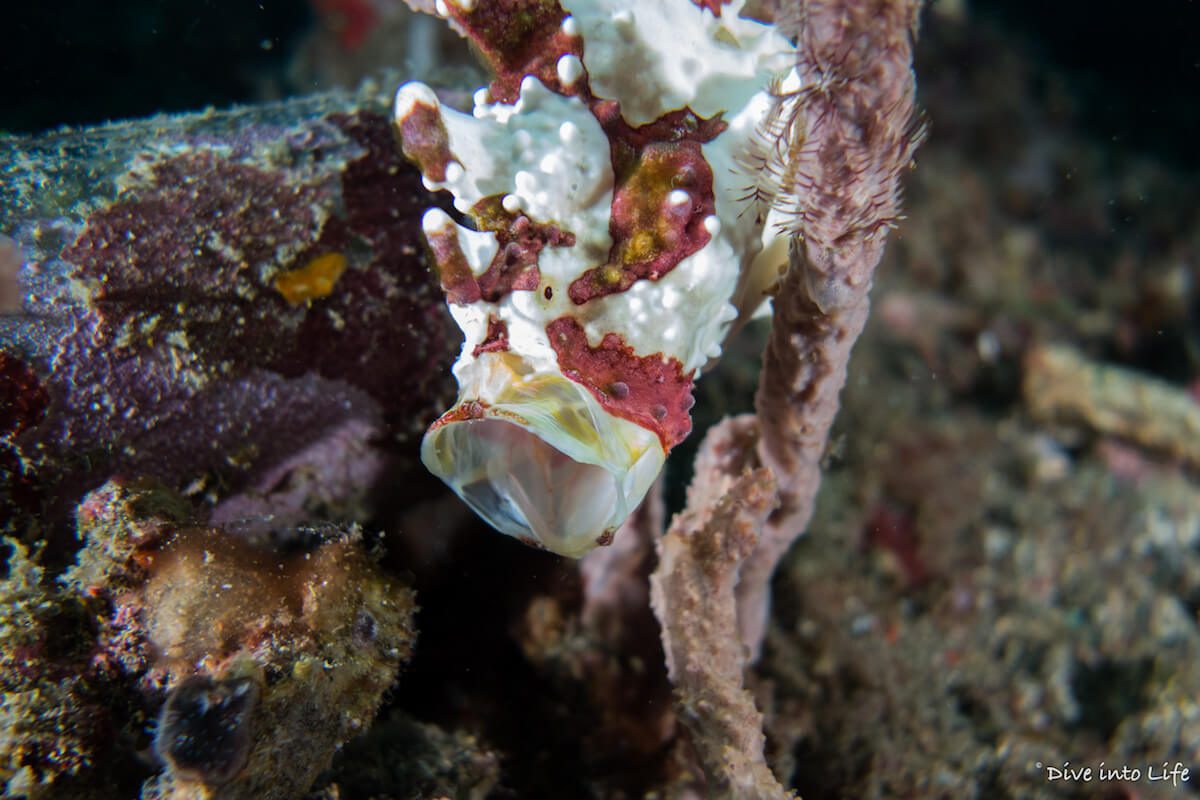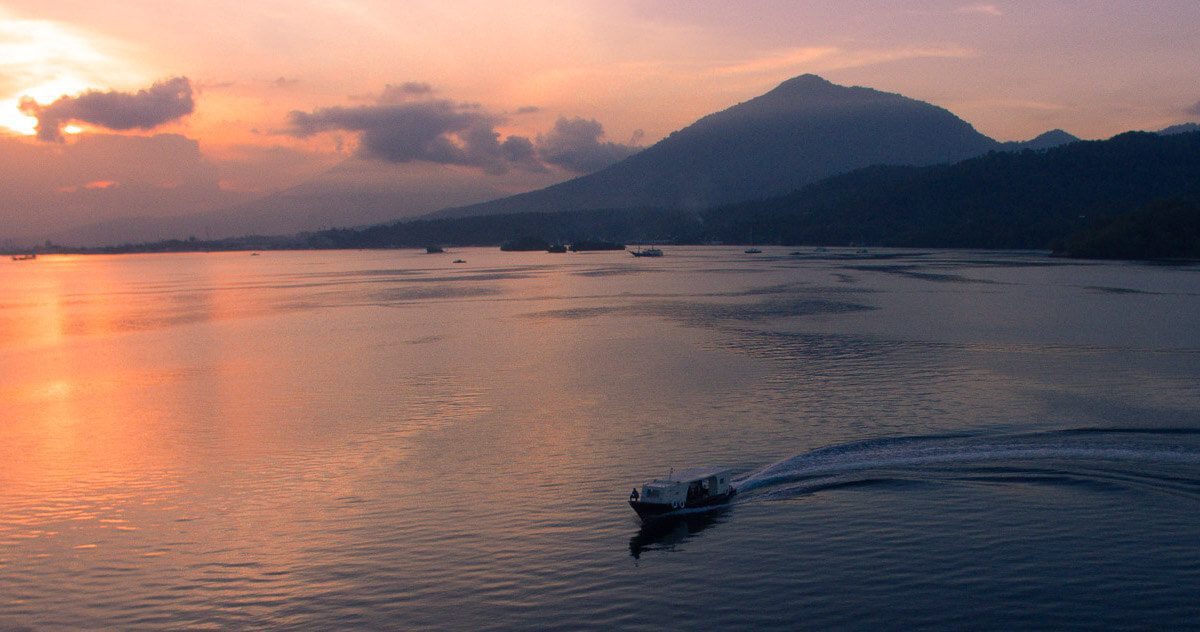Introducing Muck Diving and the Lembeh Strait

An Introduction to Muck Diving
The term muck relates to the fine, black volcanic sediment that can be found at many of the dive sites in the Lembeh Strait. This black sediment, combined with Lembeh’s nutrient rich waters means that it is home to some of the rarest and most unusual marine life in the world. The Lembeh Strait has become known as a “muck mecca” to many divers and has even been coined the “Critter Capital of the World”.
At our muck diving sites, you’ll often find corals in the shallows which give way to sand as you descend down the slopes. The slopes are punctuated by much smaller, occasional corals, sea urchins and individual anemones that sit on the sand. Due to a lack of reef for the critters to take residence in, they are often “hiding in plain sight”, relying on their impressive camouflage skills to remain undetected by predators.
Many of our critters are extremely adaptable and where there is no coral they will utilize other items on the sand and turn it into their home. Natural debris such as coconut shells or tree branches are all fair game, as are bottles and man-made debris which has found its way into the ocean.

Coconut octopus are masters at utilizing items to hide in
Why Muck Diving in Lembeh is a Must-Try Experience
When you first enter the water it may seem a little murky due to the extremely fine sediment which is easily stirred up. Give your eyes time to adjust and then the fun begins. Muck diving is all about going slow and taking your time to carefully inspect everything you find – you may be surprised by how much there is to see when you really start looking!
Critters of the Lembeh Strait
On Lembeh, peculiar animals such pygmy seahorses, hairy frogfish, harlequin shrimp, flamboyant cuttlefish, and Wunderpus may be encountered. Pygmy seahorses, one of the smallest species of seahorses, are found among gorgonian sea fans. Hairy frogfish, masters of disguising, can change their color and texture to blend in with their surroundings. The infamously starfish-only harlequin shrimp is known for its vivid colors and unusual patterns. Flamboyant cuttlefish may change their appearance to fit their surroundings and have brilliant hues. The sudden color changes of the Wunderpus, a kind of extremely intelligent octopus, are well recognized.
A Paradise for Underwater Macro Photographers
Lembeh is home to the mimic octopus, intricate ghost pipefish, blue ring octopus, and rhinopias scorpionfish. The mimic octopus is very skilled at hiding from predators and may imitate other marine creatures. Large snouts and intricate designs set apart ornamental ghost pipefish, which are related to seahorses. Blue ring octopuses are distinguished by their distinctive blue rings, which are highly lethal. Through the use of color and texture variations, rhinopias scorpionfish are masters in blending into their surroundings. Lembeh is an excellent place for underwater macro photographers since, in addition to these species, it is home to a variety of nudibranch species.

The hairy frogfish is one of Lembeh Strait’s most sought after critters
Dive into the Unique World of Lembeh
We were recently joined from the team at Dive Into Life who spend their time globe trotting in search of “Chic travel and tropical diving”. Here’s what they had to say in their recent Blog about muck diving in the Lembeh Strait…
“If you are a muck diving addict then behold, the Lembeh Strait in North Sulawesi, Indonesia, is a treasure chest packed with the most peculiar creatures.
Established as the critter capital of the world, Lembeh has a remarkable biodiversity. The black lava sand and rubble in the Strait reveal a crazy concentration of unique and exotic marine animals. Every dive is a marine biology workshop, observing bizarre creatures you would only see on the covers of dive magazines… In Lembeh, you will most definitely find some of the best muck diving in the world!”
The Lembeh Strait certainly delivered on the critter front while they were here – sightings were abundant and some of the highlights included bargibanti pygmy seahorses, warty frogfish, coconut octopus and hairy frogfish (pictures in this Blog).

This yawning warty frogfish was shot by Dive into Life
Can Anyone Join Muck Diving in Lembeh?
Yes, Lembeh’s dive sites are predominantly sloping sites that start from around 5 meters making them accessible for all levels of divers. The waters of the Lembeh Strait are protected by the surrounding land masses and currents here are non to minimal. Although we do have currents from time to time, they are the exception and not the norm. Water temperatures are consistently between 26 and 29 degrees with a slightly cooler period around September.
No prior muck diving experience is required, all of our dives are guided by our experienced dive guides who give full dive site briefings prior to every dive. Good buoyancy control is important when muck diving so that the fine sediment remains undisturbed. If you have any concerns about your buoyancy, talk to our team when you are here for tips and advice. Our guides are all Marine biology and underwater photography trained so if you’d like to practice your underwater imaging skills, Lembeh is the perfect place to do so.
PADI Courses
Are you an Open Water Diver? Why not take your PADI Advanced Open Water Course during your stay? You’ll make 5 dives with your instructor in the Lembeh Strait, work on your buoyancy and general dive skills as well as becoming certified to dive to 30 meters. If you are already an advanced diver and would like to focus on buoyancy, the PADI Peak Performance Buoyancy Specialty Course will give you an indepth understanding of buoyancy and factors that affect it.
Dive and Stay at Lembeh Resort
Are you ready to embark on an extraordinary diving adventure in the enchanting Lembeh Strait? Experience the captivating marine wonders of the strait while indulging in the utmost comfort and luxury at Lembeh Resort. Located on the secluded Lembeh Island in North Sulawesi, our resort offers a tranquil retreat where you can immerse yourself in the beauty of nature. Enjoy our exceptional accommodations, personalized service, and exquisite dining, creating a true home away from home. Discover the thrill of diving in North Sulawesi with Lembeh Resort, where every moment is filled with awe-inspiring encounters. For more information or to make a reservation, please contact us at: reservations@LembehResort.com.
Explore More of the Lembeh Strait
After diving into the incredible muck in Lembeh Strait, you might be eager to explore other wonders this diverse underwater world offers.



